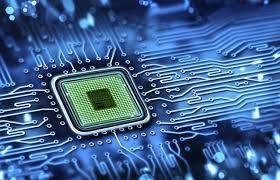Introduction
Microprocessors are the heart of modern computing. Since the introduction of the Intel 4004 in 1971, microprocessors have evolved at an unprecedented pace, transforming everything from personal computers to smartphones, autonomous vehicles, and artificial intelligence (AI) systems. This article explores the history, advancements, and future of microprocessors.
The Birth of Microprocessors
The first microprocessor, the Intel 4004, was developed in 1971. It was a 4-bit processor with a clock speed of 740 kHz, capable of executing 60,000 operations per second. Though primitive by today’s standards, the 4004 was revolutionary as it laid the foundation for all modern computing devices.
Key Milestones in Microprocessor Evolution
1. The 8-bit and 16-bit Era (1970s-1980s)
With the introduction of the Intel 8080 and later the Intel 8086, microprocessors became more powerful, paving the way for personal computing. The Motorola 68000 was also a significant development, powering Apple Macintosh computers.
2. The Rise of 32-bit and 64-bit Processors (1990s-2000s)
By the 1990s, Intel released the Pentium series, which introduced superscalar architecture, allowing multiple instructions per clock cycle. AMD and IBM also contributed to the advancement of microprocessor technology.
3. The Multi-Core Revolution (2000s-2010s)
As clock speeds reached their physical limits, manufacturers shifted towards multi-core processors. Intel Core i7, AMD Ryzen, and ARM-based processors became dominant, enhancing parallel computing and efficiency.
4. The AI and Quantum Computing Era (2010s-Present)
Modern processors, like the Apple M-series chips, NVIDIA AI GPUs, and quantum processors, are pushing the boundaries of computing. These chips leverage AI acceleration, neural processing units, and even quantum bits for unprecedented performance.
The Role of Microprocessors in Everyday Life
Microprocessors are now embedded in nearly every aspect of modern life. Smartphones, tablets, gaming consoles, smart TVs, and even home appliances rely on these tiny but powerful chips. They enable real-time processing, allowing users to perform complex tasks such as video editing, AI-driven photography, and cloud computing.
Challenges and Limitations in Microprocessor Development
Despite their rapid evolution, microprocessors face several challenges. Power consumption and heat generation are major concerns, especially as processors become more powerful. Manufacturers are constantly innovating to create energy-efficient designs, including advanced cooling systems, low-power architectures, and optimized software algorithms.
The Future of Microprocessors
Looking ahead, microprocessors will continue to evolve with neuromorphic computing, graphene transistors, and advanced AI-driven architectures. These advancements will shape the next generation of computing, making devices smarter and more efficient. Additionally, quantum computing has the potential to revolutionize industries such as cybersecurity, data analysis, and scientific simulations.


